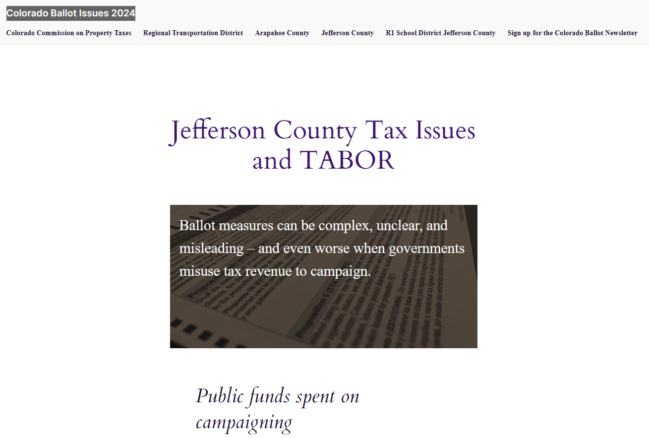Category Archives: Taxes
On this day last year, we celebrated the 30th anniversary of TABOR.
On this day last year, we celebrated the 30th anniversary of TABOR.
Your Taxpayer’s Bill of Rights!
Keeping government in check and more money in your pocket is why Colorado approved TABOR on the November, 1992 ballot.
#ColoradoRejectedPropHH
#ItsYourMoneyNotTheirs
#DontBeFooled
#VoteOnTaxesAndFees
#FeesAreTaxes
#TABOR
#FollowTheMoney
#FollowTheLaw
#ThankGodForTABOR
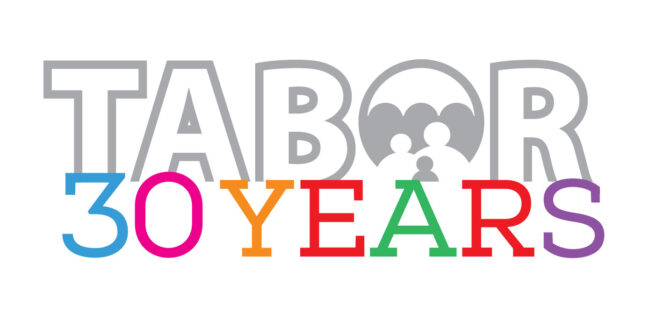

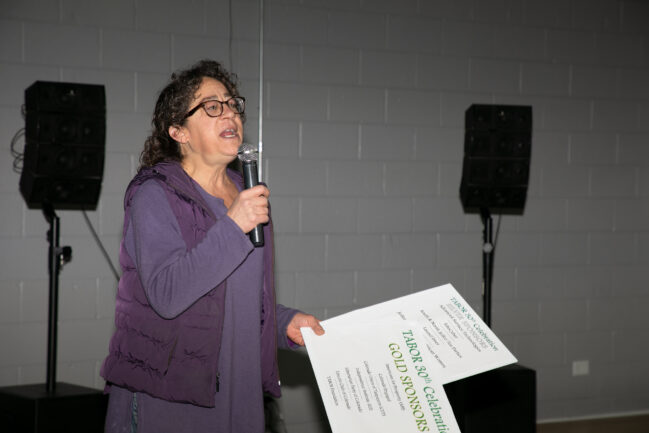

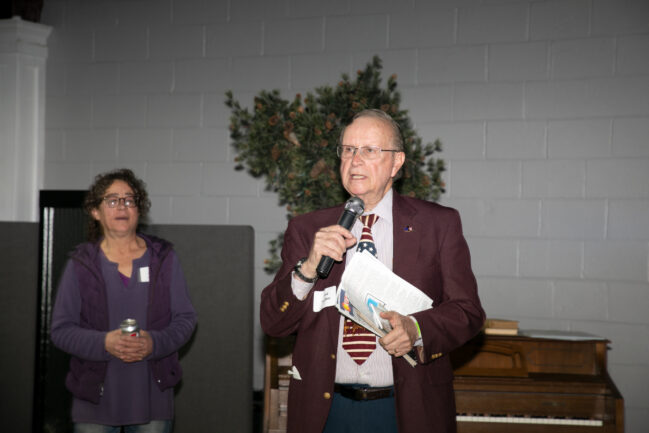

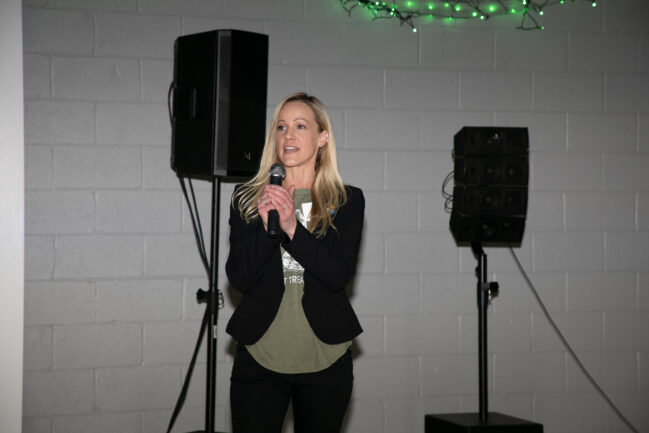
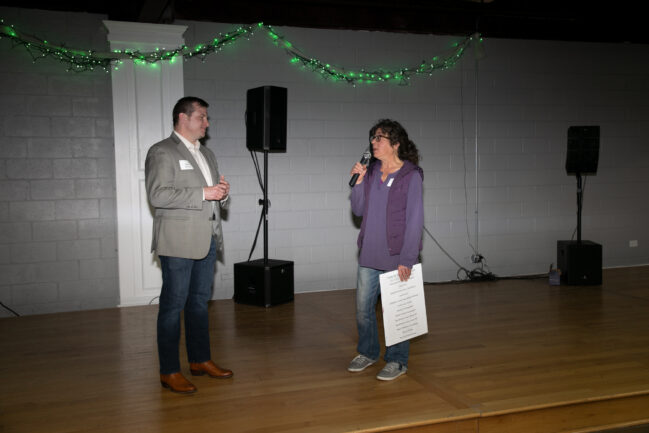
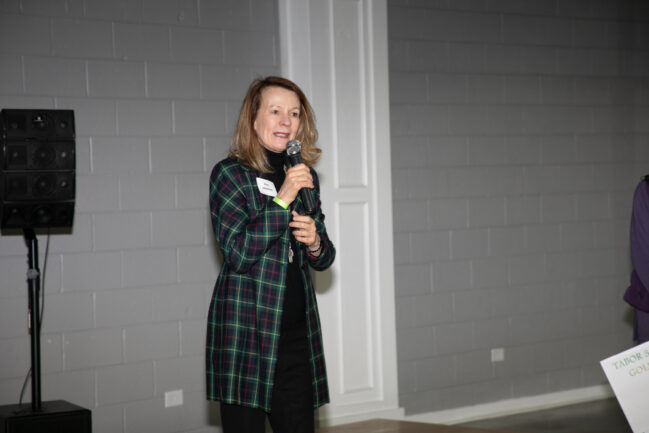

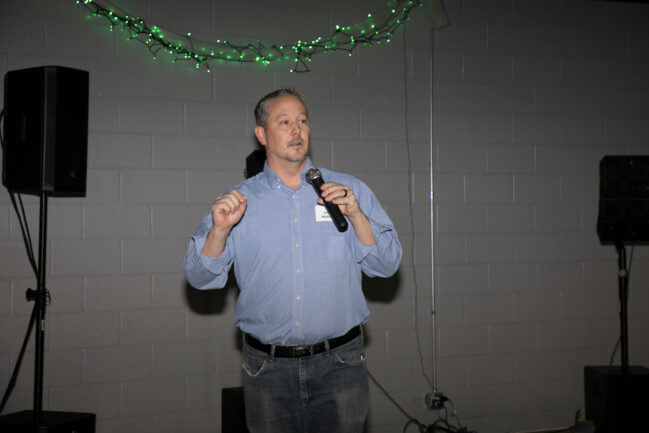
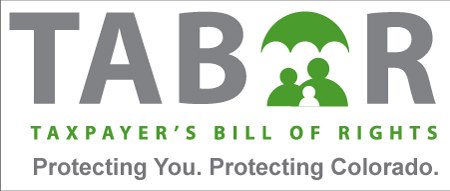
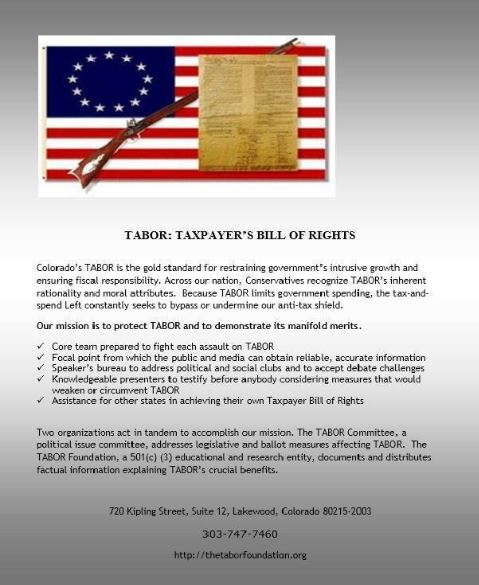
Colorado Republicans filibuster proposal to double tax credit using TABOR dollars
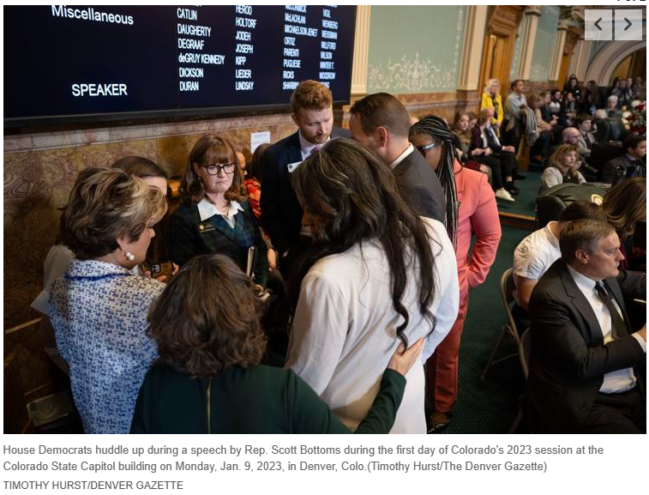
House Republicans launched a brief filibuster on Friday morning over legislation to double a tax credit using Taxpayer’s Bill of Rights surplus dollars.
House Bill 24-1084 is actually a repeal and re-enactment of a measure from the special session in November that dealt with property taxes. The 2023 measure doubles the Earned Income Tax Credit.
The filibuster, which occurred on just the third day of the new legislative session, lasted about 45 minutes. Republicans’ opposition centers around the bill’s use of TABOR surplus dollars, which they view as an attack on TABOR by reducing refunds by about $182.5 million.
Last year’s bill is the subject of a lawsuit from Rep. Scott Bottoms, R-Colorado Springs. He filed the challenge in Denver District Court on Dec. 28 against House Speaker Julie McCluskie and Gov. Jared Polis, who signed the bill into law, claiming he had been denied his constitutional right to have the measure be read at length during its final vote on Nov. 9.
To continue reading this story, please click (HERE):
TABOR in 90 Seconds
TABOR, or the Taxpayer’s Bill of Rights, can be confusing for many residents, even though it plays a big role in the amount of services a city can offer. Check out this video for a quick and easy explanation.
ALEC on American Radio Journal: Colorado’s Taxpayer Bill of Rights Turns 30
This month marks the 30th anniversary of Colorado’s Taxpayer’s Bill of Rights (TABOR), which was approved by voters in November of 1992 as a constitutional tax and expenditure limit (TEL). TABOR is considered the gold standard of state fiscal rules because it limits the growth of most of Colorado’s spending and revenue to inflation plus population. If the state government collects more tax dollars than TABOR allows, the money is returned to taxpayers as a TABOR refund. The receipt of tax rebates, totaling $8.2 billion since TABOR passed in 1992, has strengthened Colorado citizens’ confidence in the TABOR Amendment over the years. To learn more about TABOR and effective TELs, read our latest report and visit FiscalRules.org
Freedom Minute | Colorado’s Taxpayer Bill of Rights (TABOR)
Economist Dr. Paul Prentice explains Colorado’s Taxpayer Bill of Rights (TABOR) amendment. TABOR allows the state budget to grow each year at population plus inflation, while giving taxpayers the ability to vote on all tax and debt increases.
The Importance of Colorado’s Taxpayers Bill of Rights
Former President of the Independence Institute and former Colorado State Senate President John Andrews gives a brief history of the Taxpayers Bill of Rights (TABOR), how it’s been altered through the years, and what the future holds.
Freedom Minute | Everything You Ever Wanted to Know about TABOR
Polis Pitches Tax Cuts, But His Democrat-Run Statehouse Isn’t On Board
Polis Pitches Tax Cuts, But His Democrat-Run Statehouse Isn’t On Board
Patrick Gleason, Contributor
I cover the intersection of state & federal policy and politics.
Dec 15, 2023,05:40am EST

Colorado Governor Jared Polis (Photo by Michael Ciaglo/Getty Images)
GETTY IMAGES
If Texas Governor Greg Abbott (R) were to coauthor a New Republic column with Paul Krugman or another famous progressive economist touting the benefits of greater government spending, that would surprise many. Yet the ideological analog to that occurred recently, with Colorado Governor Jared Polis (D) coauthoring an article with economist Arthur Laffer, in which they tout the benefits of reduced tax rates. Governor Polis and Dr. Laffer also contend that the Taxpayer’s Bill of Rights (TABOR), Colorado’s thirty one year old constitutional amendment that prevents state spending from growing faster than population growth plus inflation and requires tax hikes to receive voter approval, is flawed.
In their op-ed, published in National Review on December 7, Polis and Laffer lament that tax limitation measures “such as Colorado’s Taxpayer’s Bill of Rights, that focus on tax payments rather than tax rates totally miss the opportunity to address the damage done by high tax rates.” Polis and Laffer bemoan the fact that TABOR surpluses are not automatically refunded in the form of tax rate reductions and instead go out as rebate checks.
“If there is an excess in tax revenues above population growth and inflation, as defined by TABOR, that means tax rates should have been lower but were not,” write Polis and Laffer. “The law serves as a signal that tax rates have been too high. The proper response to this signal is not to have it keep signaling, but to get the message and cut tax rates permanently.”
What’s more, Governor Polis’s stated desire for tax rate reductions is belied by his enactment of a bill that will make it more difficult to pass income tax cuts in the future by ballot measure. That new law, which was signed by Polis in 2021, mandates that citizen-initiated income tax cuts feature poison pill ballot language claiming the measure will reduce funding for education, healthcare, and other priorities, even when that’s not true.
Colorado House Minority Leader Mike Lynch (R) and Senator Byron Pelton (R) introduced a bill during last month’s special legislative session that would have reduced Colorado’s income tax rate from 4.4% to 4.0%. Governor Polis acknowledges the economic benefits of lowering income tax rates in his recent column, yet he did not support that bill, which was killed in committee along party lines.
Click (HERE) to go to Forbes to read the rest of this article
Only tax INCREASES have to go on the ballot. Vote NO on Prop HH
Only tax INCREASES have to go on the ballot.
Tax DECREASES do not.
Prop HH is on the ballot. . . .
Don’t be fooled by Leftist smoke and mirrors.
This is one of the biggest money grabs in Colorado history.
#ItsYourMoneyNotTheirs
#DontBeFooled
#VoteNoOnPropHH
#TABOR

